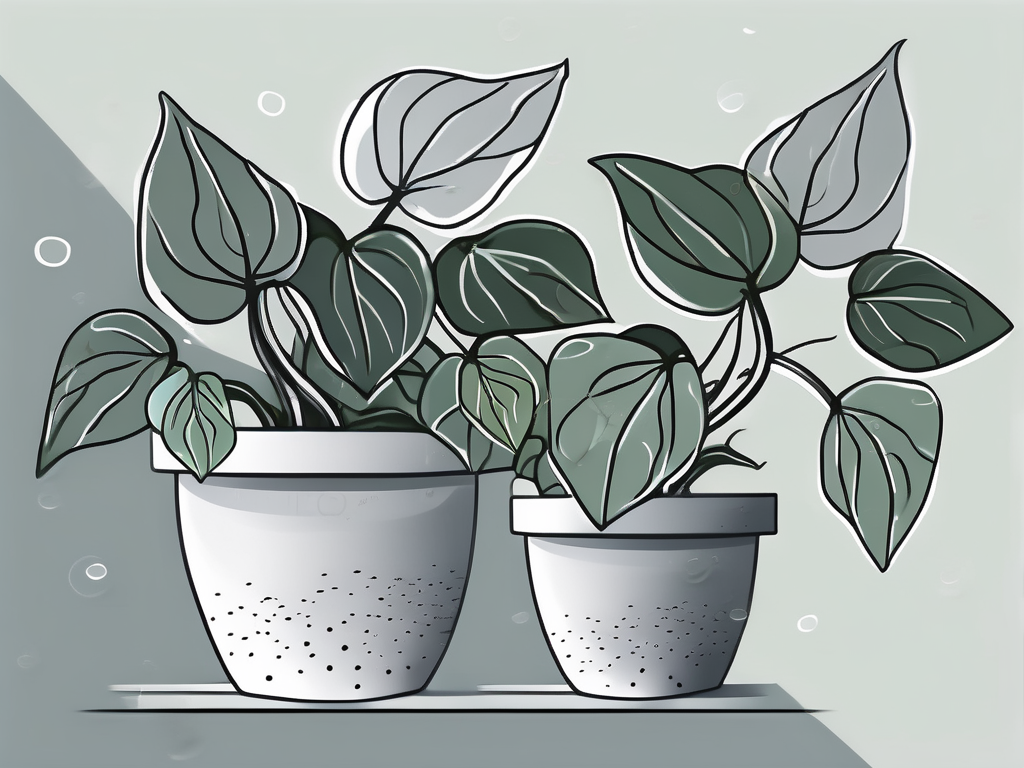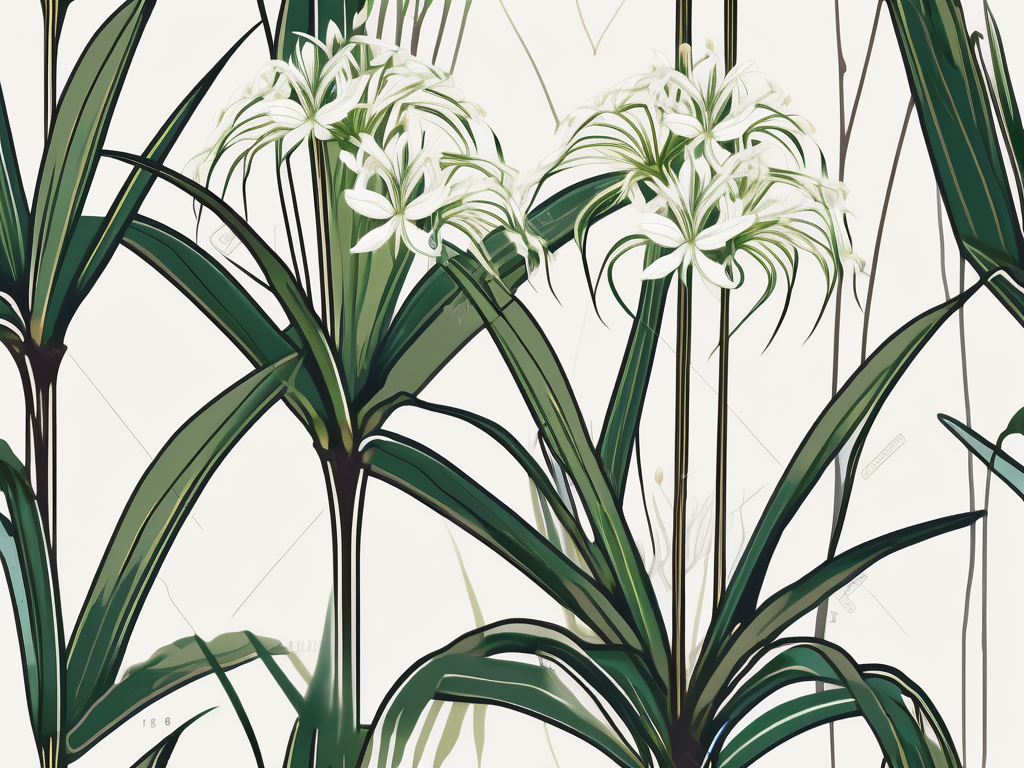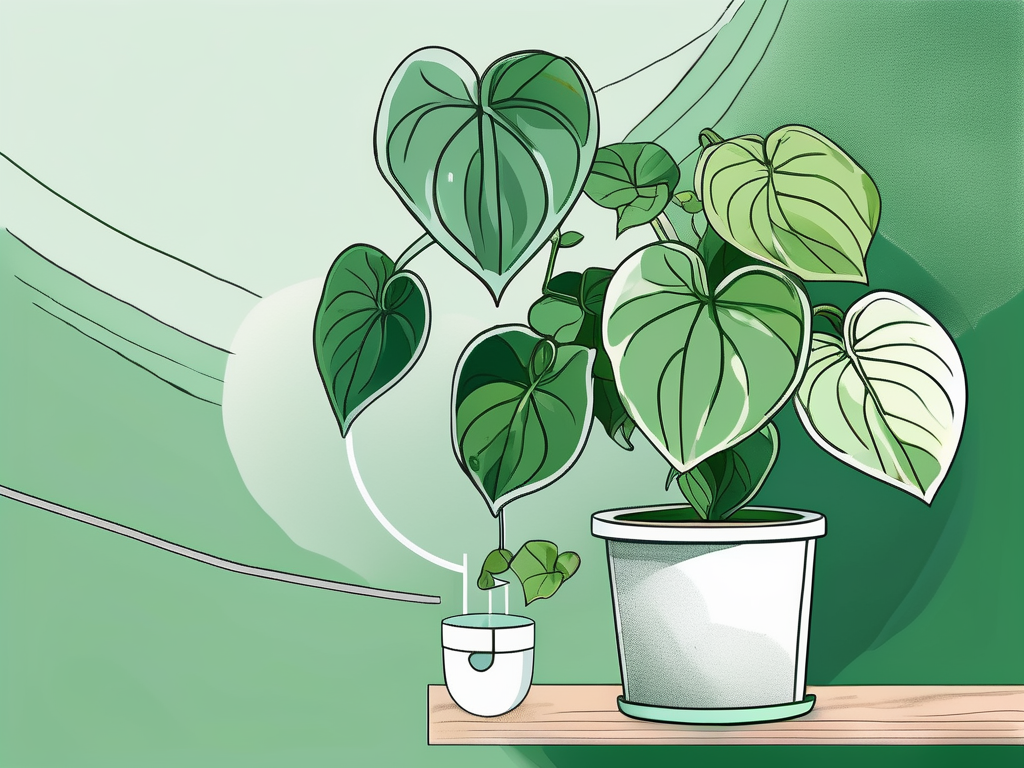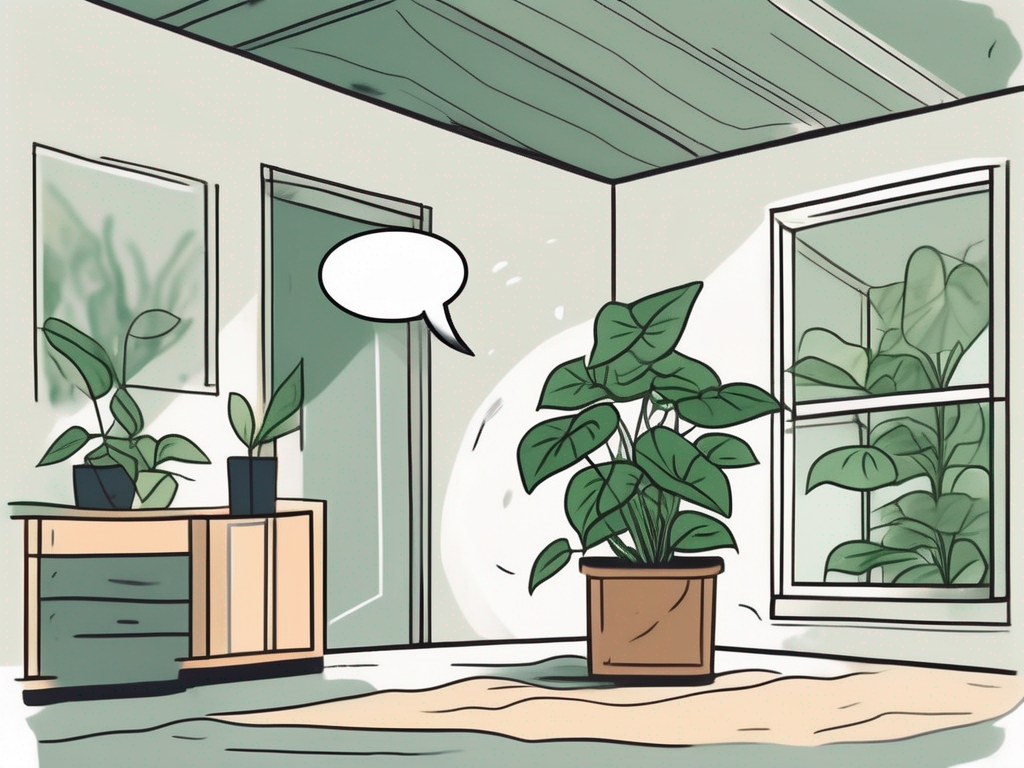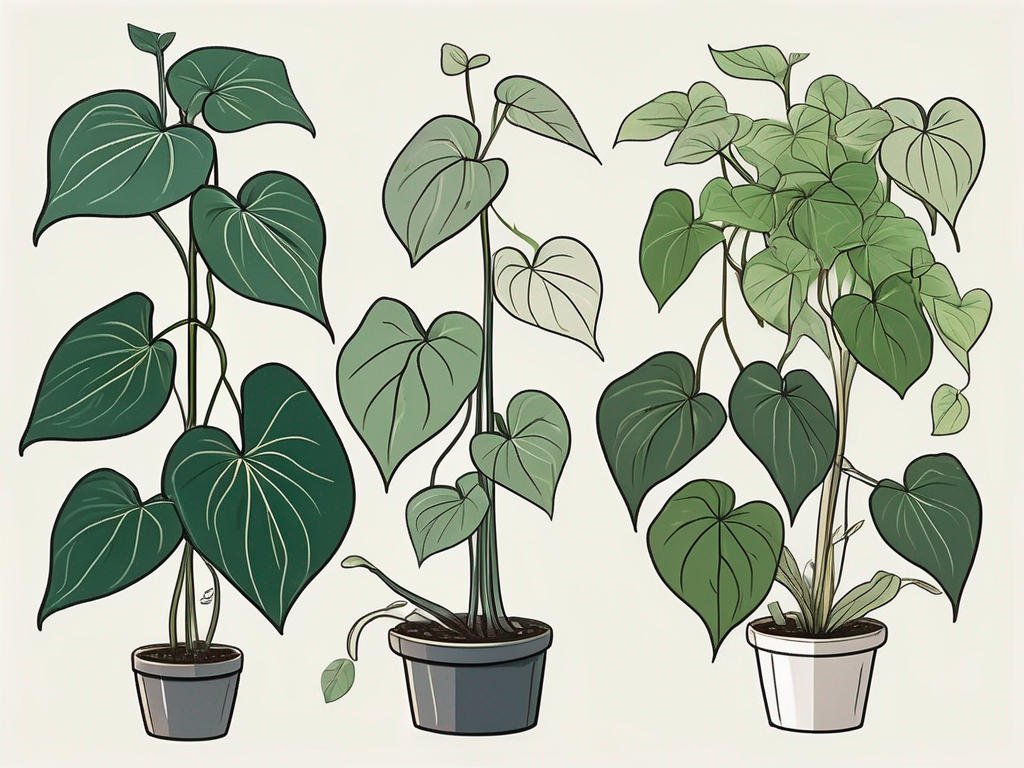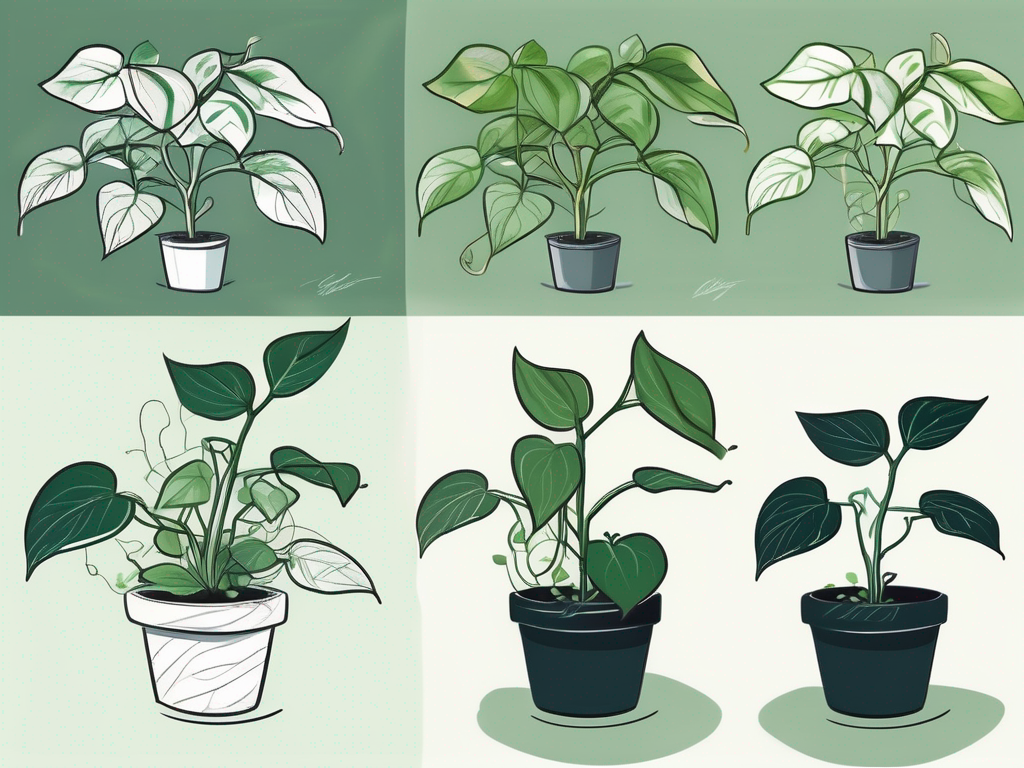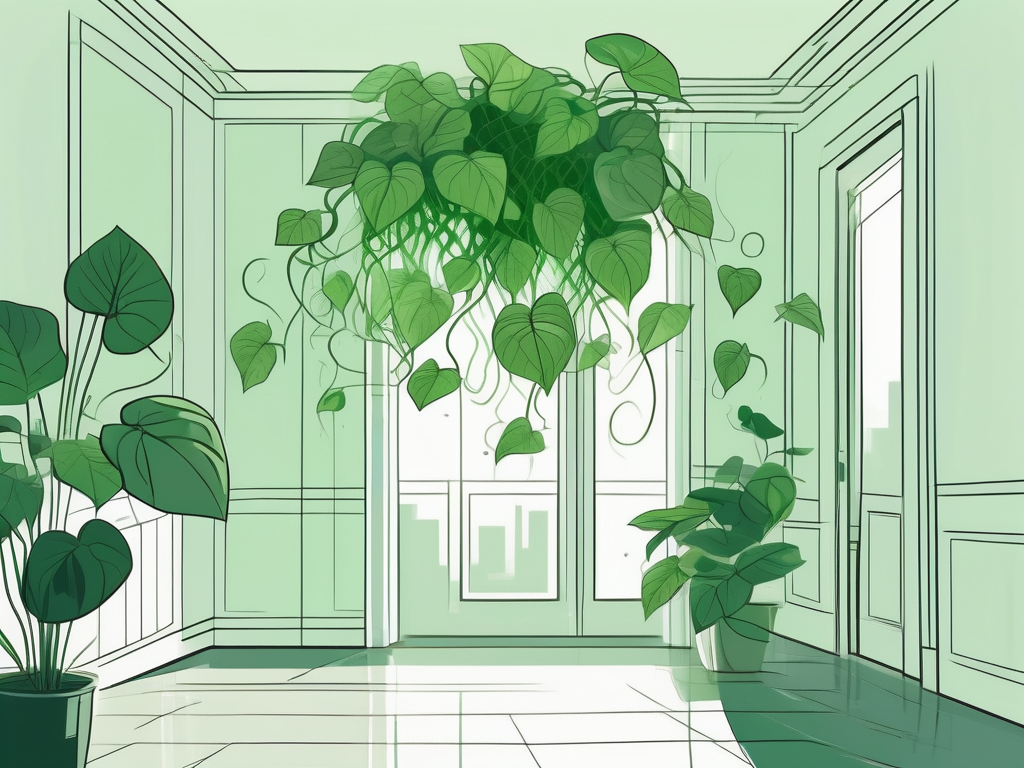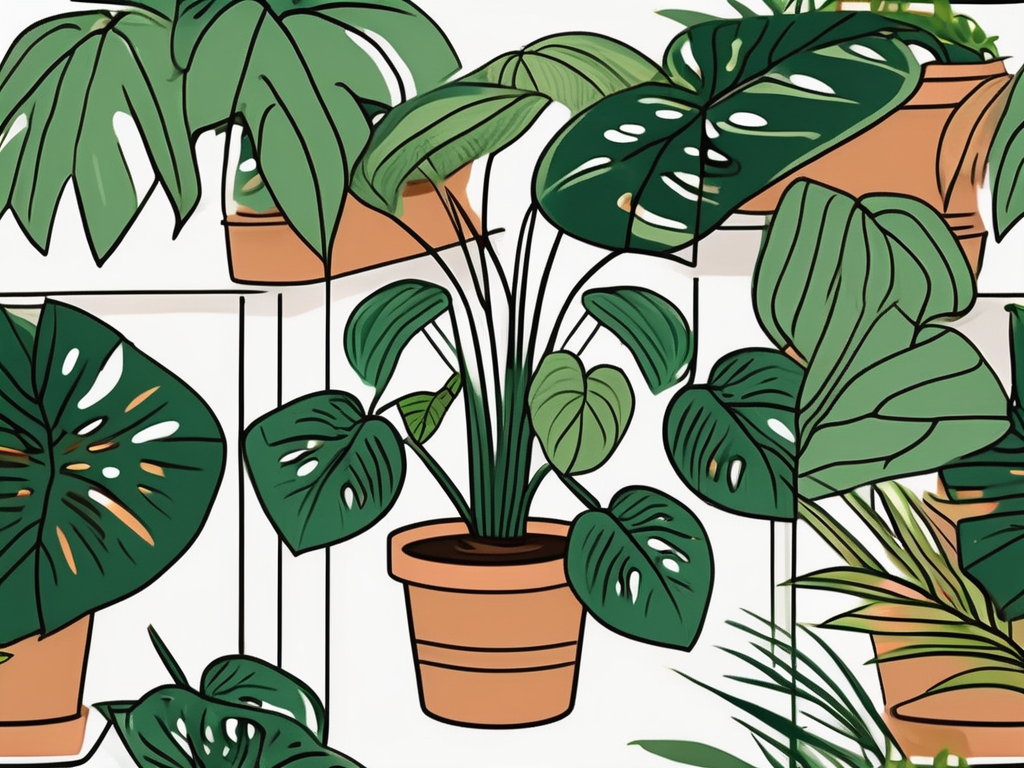
Hawaiian Pothos, with its vibrant, variegated leaves and relatively low-maintenance nature, is a favorite among plant lovers. If you're looking to add a touch of greenery to your home without too much fuss, this plant might just be your perfect match.
In this article, we'll walk you through everything you need to know about caring for Hawaiian Pothos. From light and water requirements to potting tips and pest control, you'll be well-equipped to help your plant thrive. Let's get started!
The Basics of Hawaiian Pothos
Before we dive into the nitty-gritty of care, let's talk about what makes the Hawaiian Pothos so special. Also known as Epipremnum aureum, this plant is a variety of the more common Golden Pothos. It's known for its larger leaves with striking golden-yellow variegation, mimicking the vibrant hues of its namesake, Hawaii.
Native to the Solomon Islands, the Hawaiian Pothos is a hardy plant that's adaptable to various indoor conditions, making it an excellent choice for both beginners and seasoned plant parents. Its trailing vines can reach impressive lengths, creating a lush, cascading effect that's perfect for hanging baskets or shelving displays.
What sets this plant apart is its ability to purify the air, removing toxins like formaldehyde and benzene. So, not only does it add beauty to your space, but it also contributes to a healthier environment. Isn't it amazing when something can be both decorative and functional?
Light Requirements: Finding the Sweet Spot
One of the first things to consider when bringing home a Hawaiian Pothos is its lighting needs. While these plants are quite forgiving, providing the right amount of light will ensure they remain healthy and vibrant.
Hawaiian Pothos thrive in bright, indirect light. Imagine the kind of light you would get under a tree canopy—dappled and soft. Direct sunlight, especially during the harsh midday hours, can scorch the leaves, causing them to lose their striking variegation. If you notice the leaves turning pale or brown, it might be time to move your plant to a spot with less direct exposure.
On the other hand, if the leaves start to lose their vibrant pattern and turn more uniformly green, your Pothos might be craving a bit more light. An east or north-facing window is often ideal, offering just the right amount of natural light. If your home lacks adequate sunlight, don't worry! These plants can adapt well to fluorescent lighting, making them a great option for office spaces.
Watering: Quenching Your Plant's Thirst
Watering can be a tricky aspect of plant care, but with Hawaiian Pothos, it's all about balance. These plants prefer their soil to dry out slightly between waterings. Overwatering is one of the most common mistakes, often leading to root rot.
To determine when it's time to water, simply stick your finger about an inch into the soil. If it feels dry, it's time to give your plant a drink. If it's still moist, wait a few days and check again. In general, you might find yourself watering about once a week, but this can vary depending on factors like humidity and temperature.
When you do water, make sure to do so thoroughly. Water should flow through the drainage holes, ensuring that the roots are well-hydrated. If your plant is in a decorative pot without drainage, consider repotting it or using a cachepot to prevent water from pooling at the bottom.
Remember, it's easier to revive a slightly thirsty plant than one that's been overwatered. So, when in doubt, it's better to err on the side of underwatering.
Soil and Potting: Laying the Foundation
The right soil mix can make all the difference for your Hawaiian Pothos. These plants prefer a well-draining potting mix that retains some moisture without becoming waterlogged. A standard houseplant mix often works well, but you can also create your own blend by mixing equal parts potting soil, perlite, and peat moss.
When it comes to potting, size matters. Choose a pot that's slightly larger than the current one to allow room for growth, but not so big that the soil remains wet for too long. Make sure the pot has drainage holes to prevent water from sitting at the bottom and causing root issues.
Repotting is typically needed every couple of years, or when you notice roots growing out of the drainage holes. This is also a great opportunity to refresh the soil and inspect the roots for any signs of rot or pests.
For those who love a bit of creativity, consider using a hanging basket or a decorative container to showcase your Hawaiian Pothos. Their trailing vines can create a stunning visual effect, adding a touch of elegance to any space.
Humidity and Temperature: Creating the Ideal Environment
Hawaiian Pothos, like many tropical plants, thrive in environments with higher humidity levels. While they can tolerate average indoor conditions, boosting humidity can lead to healthier growth and more vibrant leaves.
If you notice brown tips or edges on the leaves, it might be a sign that your plant needs more moisture in the air. Here are a few simple ways to increase humidity:
- Misting: Lightly mist the leaves with water every few days, especially during drier months.
- Humidifier: Place a small humidifier near your plants to maintain consistent humidity levels.
- Grouping: Grouping plants together can naturally raise the humidity as they release moisture into the air.
Temperature-wise, Hawaiian Pothos prefer a range between 65°F to 85°F (18°C to 29°C). Avoid placing them near cold drafts or heat sources like radiators, as extreme fluctuations can stress the plant.
Interestingly enough, while they love warmth, Pothos are also quite resilient. If temperatures dip occasionally, they can usually bounce back without too much fuss. Just be sure to keep them away from frost, as it can cause irreversible damage.
Feeding Your Pothos: The Nutrient Boost
While Hawaiian Pothos are not heavy feeders, providing them with the right nutrients can encourage more robust growth and vibrant foliage. A balanced, water-soluble fertilizer works well and can be applied every 4-6 weeks during the growing season (spring and summer).
Here are some tips for successful feeding:
- Read the Label: Always follow the instructions on your fertilizer package to avoid over-fertilizing, which can harm your plant.
- Less is More: When in doubt, use a diluted solution. It's better to underfeed than to overwhelm your plant with excess nutrients.
- Watch for Signs: If you notice yellowing leaves or burnt tips, it might be a sign of over-fertilization. In such cases, flush the soil with water to remove any buildup.
During the fall and winter months, when growth naturally slows down, you can reduce or even stop fertilizing. Your plant will thank you for the rest period, preparing it for another round of lush growth come spring.
Pruning and Propagation: Keeping Your Plant in Shape
Pruning your Hawaiian Pothos not only helps maintain its shape but also encourages bushier growth. Trim back any leggy vines or yellowing leaves with clean, sharp scissors. Regular pruning also prevents your plant from becoming too unruly, especially if you're growing it in a smaller space.
One of the joys of owning a Pothos is its ease of propagation. Here's a simple way to propagate your plant and share the love with friends:
- Cut a Vine: Choose a healthy vine and cut a segment that has 2-3 nodes (the bumpy parts where leaves and roots grow).
- Root in Water: Place the cuttings in a glass of water, ensuring the nodes are submerged. Change the water weekly to keep it fresh.
- Watch for Roots: In a few weeks, roots will start to form. Once they're a few inches long, you can transfer the cutting to soil.
Propagation is not only a fun project but also a great way to expand your plant collection or gift a piece of greenery to a friend. Plus, who doesn't love a bit of plant magic?
Dealing with Pests: Keeping Unwanted Guests at Bay
While Hawaiian Pothos are relatively pest-resistant, they can occasionally fall victim to common houseplant pests like spider mites, mealybugs, and aphids. The good news is, these issues are usually manageable with a bit of attention and care.
Here are some steps to tackle pests effectively:
- Inspect Regularly: Make it a habit to check your plant's leaves and stems for signs of pests or damage.
- Isolate Affected Plants: If you spot any pests, move the affected plant away from others to prevent the spread.
- Use Natural Remedies: A gentle spray of neem oil or insecticidal soap can help eliminate pests without harming the plant. Be sure to follow the product instructions for best results.
Remember, catching pest issues early can save your plant a lot of stress. Regular cleaning of leaves with a damp cloth can also help keep pests at bay and your plant looking its best.
Designing with Pothos: Bringing Nature Indoors
Hawaiian Pothos aren't just easy to care for—they're also incredibly versatile when it comes to interior design. Their trailing vines and vibrant leaves can add a splash of greenery to any room, making them a favorite for plant people who love to style their homes.
Here are a few creative ways to display your Pothos:
- Hanging Baskets: Let the vines cascade down from a hanging basket for a dramatic effect.
- Shelving Displays: Position your Pothos on a high shelf and let the vines drape elegantly.
- Macramé Holders: Combine your love for plants and crafts by using a macramé holder for a boho-chic look.
These plants are also great for creating a sense of cohesion in open-plan spaces. By repeating the plant throughout your home, you can tie different areas together naturally. Plus, the air-purifying qualities of Pothos make them not just a design choice but a healthy one, too.
Final Thoughts
Caring for Hawaiian Pothos is a rewarding journey that offers both beauty and benefits for your home. By understanding their light, water, and soil needs, you can enjoy a thriving plant that enhances your space.
At Cafe Planta, we're here to support your plant journey. Whether you're looking for new additions or have questions about plant care, we're just a email or Instagram message away. We believe in the power of plants to connect us with nature and each other. Let's create beautiful, thriving spaces together!













